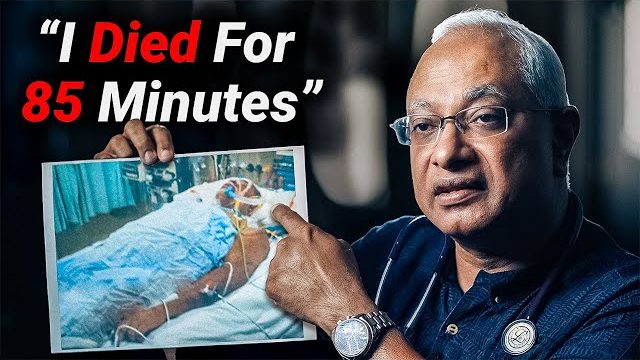In a quiet village tucked away in the Golan Heights, near the border between Israel and Syria, an incredible story emerged that continues to baffle both locals and experts.

A three-year-old boy from the Druze community claimed he remembered being murdered in a previous life. While most would quickly brush off such claims as the imaginative ramblings of a child, what unfolded gave the entire village pause—and sent shivers down many spines. The boy didn’t just talk vaguely about past events; he described in detail how he had died, and then led elders to the exact location of his buried body and the murder weapon. Shockingly, a human skeleton and an axe were found precisely where he said they would be, making this more than just a strange bedtime story.
The story reached wider audiences when Dr. Eli Lasch, a respected physician known for his medical work in Gaza, witnessed the boy’s testimony firsthand. His detailed account of the event was later recorded by German author and therapist Trutz Hardo in his book Children Who Have Lived Before: Reincarnation Today. According to Dr. Lasch, the child’s memories were astonishingly consistent and accurate, especially considering he had never met any of the people from the life he described. One eerie detail that added weight to the child’s story was a birthmark on his head—a red mark exactly where he claimed to have been fatally struck. In the Druze belief system, birthmarks are often seen as remnants of trauma experienced in previous lives, lending a cultural layer of credibility to his claim. The case took an even darker turn when the boy identified his killer.
The accused man initially denied everything, but after the remains and the axe were discovered just as the boy described, it was reported that he privately confessed. This revelation sent shockwaves through the local community and reignited worldwide curiosity about reincarnation and the mysteries of the soul. While skeptics may argue this was all an extraordinary coincidence, believers view it as compelling evidence that reincarnation could be real. It raises profound questions about memory, identity, and whether the human soul can carry traces of its past into a new life. This story isn’t alone in the world of reincarnation claims. In the United States, young James Leininger from Louisiana began having intense nightmares about crashing in a World War II fighter plane.
He soon started describing military aircraft with shocking accuracy, naming his former squadron, and even identifying a specific aircraft carrier. His family eventually traced his story back to James Huston, a real fighter pilot who died during the war. At first doubtful, his parents became convinced their son was living a second life after witnessing the deep historical knowledge he couldn’t possibly have learned at his age. A similar case occurred in 1930s India, where four-year-old Shanti Devi recalled her past life in a town far from her current home. She named people, described her house, and spoke about her death during childbirth. Her story attracted national attention and was investigated—leading even Mahatma Gandhi to take it seriously. Many of her claims were verified as accurate, adding further legitimacy to reincarnation discussions. Birthmarks often appear as recurring elements in these stories. Dr. Ian Stevenson, a psychiatrist from the University of Virginia, devoted decades to studying children who claimed to remember past lives. His research uncovered over 2,500 such cases, with many featuring birthmarks or deformities that matched the injuries the children claimed to have suffered in their previous lives. His groundbreaking work paved the way for modern reincarnation research. Other extraordinary stories include a Thai boy with head birthmarks who claimed to be a teacher shot in the head, which matched historical records, and a Burmese child with a chest birthmark who remembered being a soldier fatally wounded in that exact spot. Dr. Jim Tucker, a successor to Stevenson at the University of Virginia, continues the research, focusing on children aged two to five—the age range where past-life memories seem most likely to emerge. His work explores the theory that consciousness might not be solely tied to the brain, a notion that’s also gaining attention in quantum physics and near-death studies. Reincarnation beliefs span cultures across the globe. In Hinduism and Buddhism, the soul is thought to undergo multiple rebirths for spiritual growth. Indigenous cultures in the Americas and Africa also hold views of ancestral return and soul continuity. The boy’s story from the Golan Heights stands as one of the most compelling cases to date, pushing the boundaries of what we think we know about death, identity, and memory. Whether met with skepticism or belief, tales like these continue to spark fascination and challenge our understanding of human existence.





